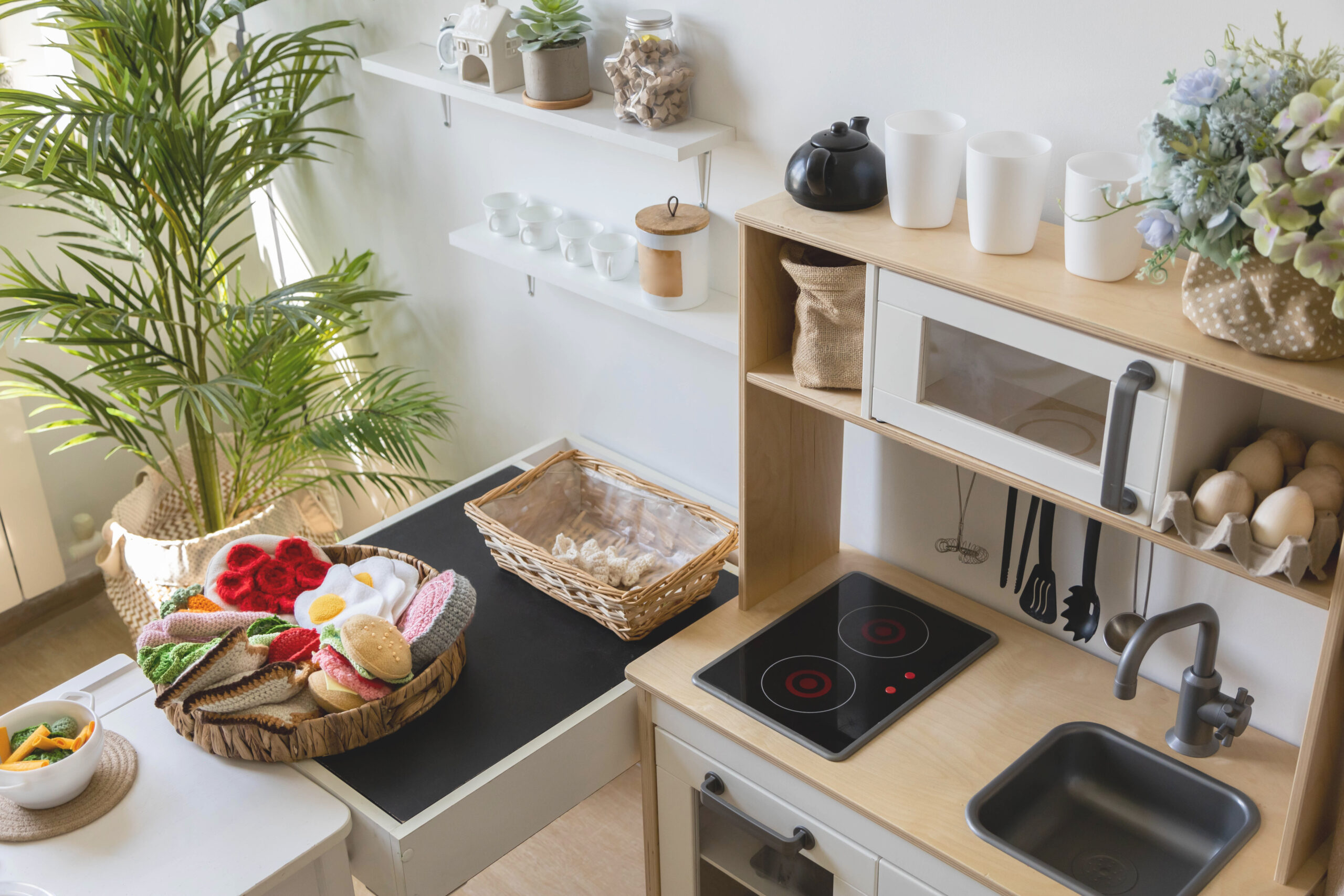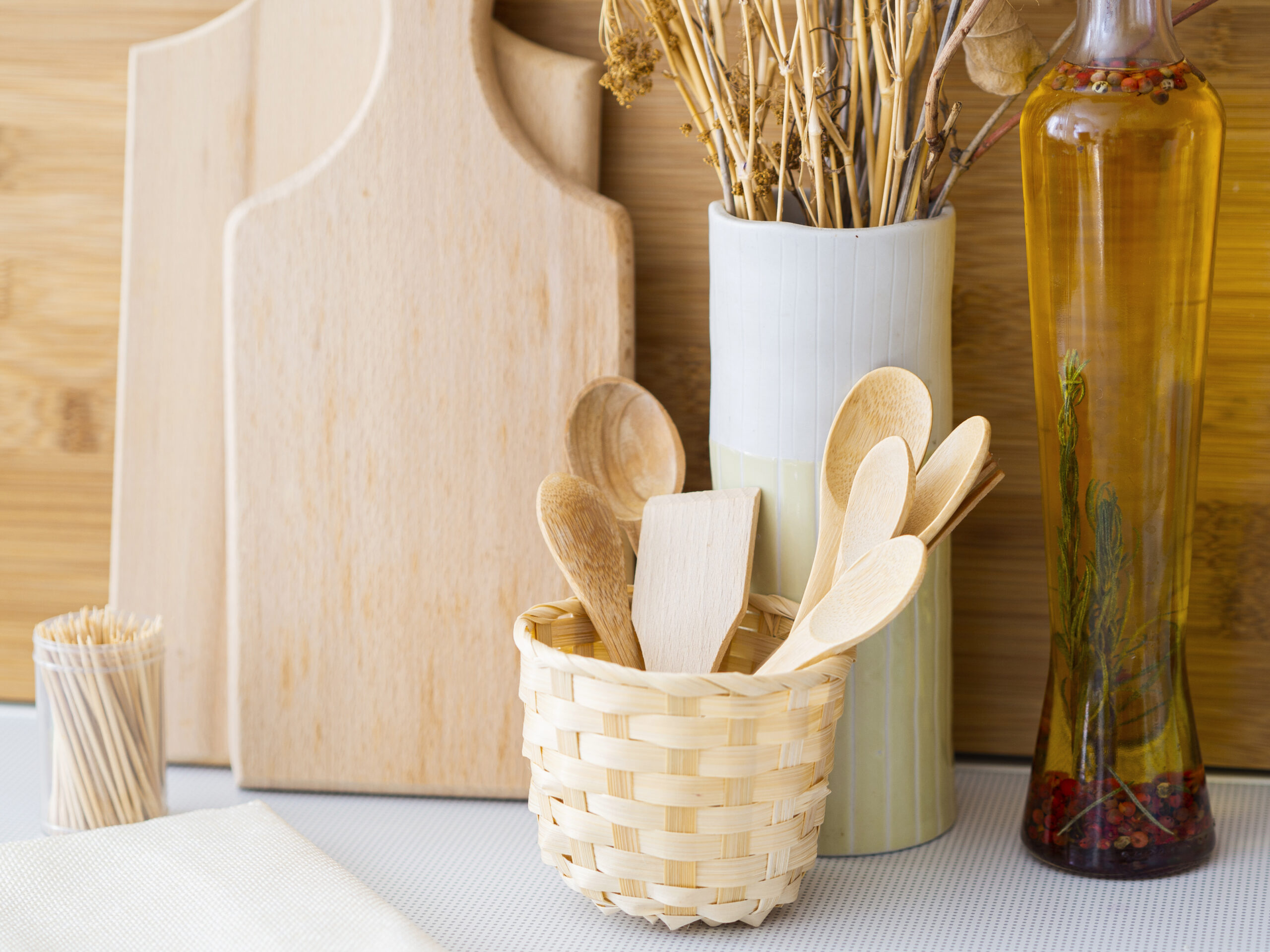Dry kitchen elements can be used to make a cohesive and well planned space within the home kitchen. Here are 6 important inclusions that home owners can opt for.
Dry Kitchen Elements #1: Adequate Counter Space

Counter space is one of the must haves in the dry kitchen of a home and lays the basis for smoothly preparing and organising food efficiently. Whether it be assembling snacks, preparing baked goods or using appliances like blenders and toasters, ample counter space makes the entire process easier and much more pleasant. It grants space to lay out one's ingredients, assemble dishes and conduct small appliances without crowding. In a dry kitchen where the central part of the labour is at a non-water basis, the counters turn into multi-functional hubs for everything from chopping vegetables to cooling baked goods.
Another important thing about the countertop in the dry kitchen is the material. Solid materials like quartz, granite or Silestone have a number of extra advantages — they are resistant to heat and scratches and easy to clean which means they are apt for a place that has much work traffic. Silestone presents very special hygiene properties due to its feature of being non-porous and resisting stains — that is what makes such material so relevant when dealing with dry ingredients.
@ampquartzcabinets Cara Kira Ketinggan Kabinet 📐 Lepasni kalau ID/ Contractor tanya nak tinggi berapa, dah boleh jawab! 📝 Save video ni untuk future reference! #TipsKetinggianKabinet #TipsDapur #TipsKabinetDapur #Ampquartz
♬ sonido original – Relax con Notas
Also, strategic counter placement improves workflow especially when placed near storage units, appliances and the cooking area. A proper design of counter space could give a smooth flow of food preparation zones — allowing movement in a continuous manner from one activity to another. Adding supplementary elements to this like under-counter storage or pull-out drawers will enhance space utilisation to its fullest and solve both the problem of cooking and utensil storage.
Island counters or breakfast bars can also be functional in that they provide additional space to prepare that can double as a casual dining space. In short, counter space in the dry kitchen is a basic amenity that reinforces usability, optimises flow and amplifies the aesthetic and convenience factors in the kitchen space.
Dry Kitchen Elements #2: Having Display Shelving

Display shelving is definitely one feature that should not be missed in the dry kitchen of any home. These can also be handy places for almost everything that one needs to store in the kitchen from cookbooks and decorative jars to the very important ingredients of food preparation like spices and grains.
With display shelving, home owners can make use of the space upward to avoid clutter on countertops and keep everything within reach. This, in turn, facilitates a more functional cooking area where food preparation and cooking can be carried on with ease. Furthermore, display shelving personalises the kitchen with its decor — beautiful containers, artisanal products or cookbooks that one loves could be displayed — creating a visual narrative that speaks volumes about the style and personality of one as a cook. Open shelving also sparks creativity, from a pop of colourful spices to dish ware in colours, adding some visual interest and warmth to the space, allowing the kitchen to become a warm hub where family and friends gather.
Besides, adjustable shelves provide flexibility in design. It enables the owner of the house to change their height and layout based on their needs. It is of particular value in compact kitchens which have to maximise storage without sacrificing aesthetics. Adding function to form, lighting integrated on or above display shelving can showcase favourite items and provide additional task lighting for cooking.
Finally, materials used can include everything from wood to metal to glass that complements other kitchen elements to tie the room together in a seamless appearance. Overall, the display shelving is usually indispensable in a house dry kitchen, marrying functionality with style to improve organisation and invite creativity into the culinary space.
Dry Kitchen Elements #3: Including Lighting That Is Functional

In any home, functional lighting is indispensable in the dry kitchen — making it more functional and a beauty to behold. Proper lighting will ensure that tasks ranging from chopping up vegetables down to baking cookies get done with safety and efficiency. A well-lit kitchen does not only provide great visibility but also makes the area more inviting, whether one cooks or entertains.
Achieve high functionality in your dry kitchen by using layering in its lighting design. The first layer in this should be ambient lighting which comes from overhead fixtures or recessed lights that provide overall illumination. The goal is to create a bright, inviting space. Next will come the task lighting. Strategic placements under cabinets or over workstations illuminate areas where precision is fundamental. LED strip lights or pendant lights would work best here, allowing you to have enough brightness to handle detailed tasks without glare.
@ampquartzcabinets Sesuai sangat untuk yang suka ✨classic kitchen✨ look! #WhiteCabinet #WhiteKitchenCabinet #KabinetDapurPutih #KitchenDesignIdeas #TipsDapur #AMPQUARTZ
♬ suara asli – Enchante Stuffs – Enchante Stuffs
Moreover, dimmable lighting fixtures can adjust to your need for brightness which will make it relatively easy to easily switch from cooking to dining without further issues. You also have to consider the colour temperature of your lighting — the warmer tone of it would make it cosier while cooler tones will heighten focus when preparing food. Other good additions are dimmers which will enable you to control the brightness of lighting for various situations-from bright light while cooking to soft light when entertaining.
Functional lighting also leads to safety by preventing accidents that may be caused by shadows or poor visibility. An intelligent design of lighting will turn your dry kitchen not only more functional but also very agreeable for meetings, preparing meals and sharing them with family and friends. Efficient lighting solutions are an indispensable element in a home dry kitchen whether looked at from the functional or aesthetic viewpoint.
Dry Kitchen Elements #4: Using Compact Furniture

Compact furniture in every home's dry kitchen is a must to save space while being functional and stylish. Compact furniture, considering every inch counts in modern living, ensures better facilitation to make the most out of small areas. Such foldable tables and stackable chairs can provide versatility in various activities starting with meal preparation and ending with guests' reception without compromising comfort or aesthetics.
A foldaway dining table can easily fit away when not in use, clearing much-needed space while stackable stools tuck nicely into a corner or under counters. Add pull-out shelves or carts for extra prep surfaces that can move around as needed. Such mobile options allow flexibility in adjusting the kitchen setup according to the type of work one is doing or the number of guests.
Compact storage solutions such as narrow cabinets or vertical shelving enable one to keep necessary items within reach without cluttering up the kitchen space. Materials such as lightweight metal or engineered wood can lend durability without adding bulk — making sure furniture remains easy to move and rearrange. Compact furniture also adds visual appeal to a dry kitchen — this kitchen surely invites the best atmosphere, keeping in view efficiency.
Thus, by making a proper choice of furniture pieces that bestow their needs without sacrificing style, home owners can create a well-organised and practical kitchen. In other words, compact furniture turns a home dry kitchen into a place which is not only functional but also pleasant to work in and thus integral to the modern kitchen.
Dry Kitchen Elements #5: Incorporating Spice Organisers

Spice organisers are good to have in every home's dry kitchen for efficiency and aesthetics. This helps in keeping the place organised by allowing special space for all spices — making it easier to work upon them when time becomes a crucial issue in cooking food. This means that where there is a nicely organised spice rack, there would not be delays or probably even mistakes over the execution of any recipe due to frustrating searches through cluttered cupboards or drawers.
Spice organisers can be in the form of tiered racks or wall-mounted shelves which also could come in pull-out drawers — giving home owners free will to choose the best suitable for their style and layout in the kitchen. Choosing stackable and airtight containers will keep spices fresh and allow for vertical storage so that all of the different options can be viewed at one time. Clear labelling in regard to quick identification is also important so even the least seasoned of cooks can feel confident in selecting what spice to utilise.
@ampquartzcabinets Siapa kata gaji dah habis tak boleh shopping? Sini shopping kat Ampquartz kita bagi 𝗜𝗻𝘀𝘁𝗮𝗹𝗺𝗲𝗻𝘁 𝗣𝗹𝗮𝗻 𝗨𝗽 𝘁𝗼 𝟮𝟰 𝗠𝗼𝗻𝘁𝗵𝘀 tauuu😘 📞Call je kita sekarang untuk sebarang pertanyaan: https://go.wa.link/ampquartz 📍Jemput datang ke showroom kita dekat 82, Jalan Gaya 1, Taman Gaya, Ulu Tiram, 81800 Johor Bahru atau korang Waze je https://waze.com/ul/hw23bfh9s4 #ampquartz #kitchencabinet #ampquartzkitchencabinetmaker #customcabinetJohor #cabinetulutiramjohor
♬ thim slick – 2000-2022
A visually appealing spice organiser could also be a decoration in the kitchen, adding colours and personality. If appropriately organised, spices can be arranged according to cuisine or usage — allowing for an intuitive approach in cooking. Such an arrangement, in fact, thoughtfully provokes experimentation with varied flavours, inspiring culinary creativity.
Overall, a good spice organiser elevates the functionality of a dry kitchen into a well-oiled machine that further enhances one's cooking experience — allowing the kitchen to be tidy and inviting. Whether it is a small or an extensive array of spices, an organised spice system is the secret to enjoying the art of cooking in a dry kitchen setting.
Dry Kitchen Elements #6: Using Utensils For A Clean Space

A utensil holder is primarily to become a part of any well-organised home dry kitchen for functional and aesthetic purposes. In an area used for the preparation of food with no use of water, one needs to have an effective system in place to store utensils so that the environment may remain clutter-free.
A utensil holder would house vital tools like spatulas, wooden spoons and whisks within reach and organised for ease of access during meal preparation. The proper holder can make all the difference if a kitchen functions efficiently. For example, countertop canisters will hold a substantial number of frequently used utensils in full view so that a cook can reach for what they need without having to dig through drawers. Vertical holders such as caddies or magnetic strips save counter space and can be mounted on walls for an open, airy feel in a kitchen while keeping utensils always at hand.
Other than that, utensil holders come in various materials — ceramic, stainless steel or wood. It enables a home owner to make a decision on those that complement their kitchen decor. Besides functionality, utensil holders can add some decorative features to the kitchen. With the addition of colourful or uniquely designed utensil holders, there is a possibility that you can add your personal taste to the design of the kitchen. Furthermore, multi-compartment holders will instil much more organisation in which different kinds of utensils are separated and easily found during any cooking session.
In a nutshell, utensil holders are indispensable in a home dry kitchen, as they simultaneously offer functionality, accessibility and style while creating an organised cooking experience that ultimately will increase the overall efficiency and pleasure in the kitchen.





